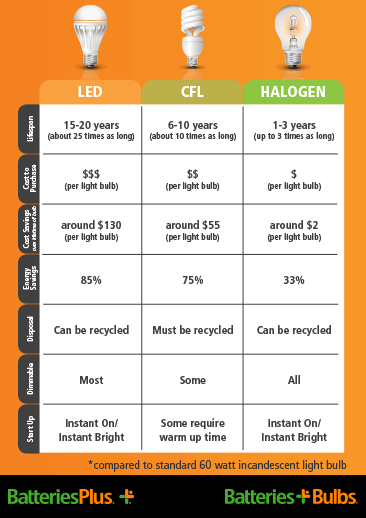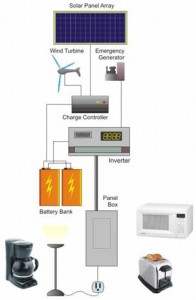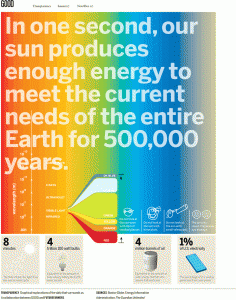The Top 3 Energy Efficient Technologies
Power - by David Neubert - updated on 8/2/2013
All good things must come to an end; live by the sword, die by the sword; heck, mo' money mo' problems, right? Well, maybe that last one might not be an issue for most of us, but you get the idea. For many perceivably good things that exist in the world, there often seems to be a "catch"; so many things are bittersweet, aren't they? Whatever happened to the idea of a win-win anyway? Is such a thing even possible?
Well, when it comes to the advancements in renewable energy technology, including solar, and the overall increase in energy-efficiency they now offer, it's hard to find anything negative about them. In fact, they're a win, win, win. These new technologies are more efficient, they save money, and preserve the environment. Here are three products that technology has influenced over recent years to contribute to their triple goodness:
1. Rechargeable Batteries
Many different types of batteries use rechargeable technology – from tiny AAA batteries to 1000 lb.+ electric car batteries. The most common types of rechargeable batteries are:
- Lead-Acid – invented in 1859 – it's the oldest form of rechargeable battery still in use – most commonly used in motor vehicles
- NiCd (Nickel Cadmium) – invented in 1899 and effective in many devices such as power tools – demand is declining in favor of more environmentally friendly alternatives such as NiMH
- NiMH (Nickel Metal Hydride) – half the weight of NiCd batteries, NiMHs came into use in the late 1980s – 30% more energy capacity and more environmentally friendly than NiCds (no Cadmium) – often used to power digital cameras
- Lithium Ion (Li-ion) – started being used in the early 1990s – have extremely high energy density, making them the least likely batteries to lose their charge when not in use (self discharge) – mostly lightweight, with rapid charge capability – convenient for applications such as cell phones, laptops, and even electric cars opens in new window
- Lithium Ion Polymer (Li-poly) – became available primarily to cell phone manufacturers in 1999 – similar to Li-ion batteries, but can be made thinner and lighter weight. They provide slightly higher energy density than Li-Ion but have a typically lower cycle life
- Lithium Iron Phosphate (LiFe PO4) – relatively new chemistry – good alternative for certain lead-acid applications, and commonly used in jet skis, motorcycles and other powersport applications
By using rechargeable batteries in our devices and cars, we can save money by buying less new batteries or having to use other more expensive forms of power, like gasoline. Not to mention, significantly less wear-and-tear on the planet is achieved by making a notably smaller carbon footprint with rechargeable batteries.
2. Energy Efficient Light Bulbs
The energy savings associated with the use of new CFL and LED bulbs is staggering. There is no reason why people shouldn't swap-out their old incandescent bulbs with these vastly more energy-efficient products as soon as possible, and start saving money right away! Again, saving money also means saving energy and the precious resources needed to power these new lights. Please review this graphic and see just how much savings can be achieved by making the switch:

3. Solar
Using the sun's astounding amount of energy to power our devices and homes is absolutely intuitive. However, it's taken years for this technology to catch up to these ideals, and developing a cost-effective solar system for homes and businesses is just now beginning to seem like a reality. Still, we have a little way to go before it becomes feasible for everyone to utilize. Here are some things to consider:
- Beyond cost, the argument for solar isn't a tough one to make.
- The two different types of systems are: Grid-tied (or On-grid) and Off-grid.
- Grid-tied systems allow customers to stay connected to the existing power grid while getting paid or credited for the energy produced by their system, restraining from use of the grid's coal-fueled electricity.
- Off-grid systems enable customers to operate completely independent of the existing power grid. In this system, all power is stored in batteries (or occasionally capacitors). This is the only option for extremely remote locations, unreachable by electrical wires, or for those customers who want nothing to do with traditional energy sources. It's a more expensive system due to the batteries and their maintenance. See diagram to the left.
- So just how much do these systems cost, and how long does it take to save enough money to offset the initial costs? Many studies on this have been done over the past twenty years, emphasizing that the biggest discrepancy among pricing currently occurs state-to-state, depending on active rebate programs.
- Typically, most examples show that it takes roughly 10-15 years for the savings to offset the initial costs of the solar system.




